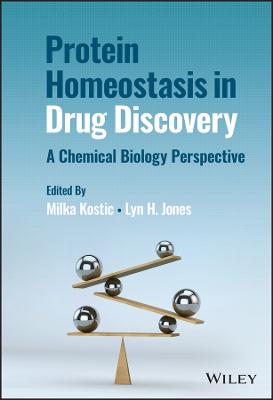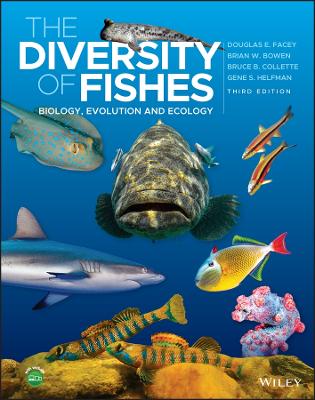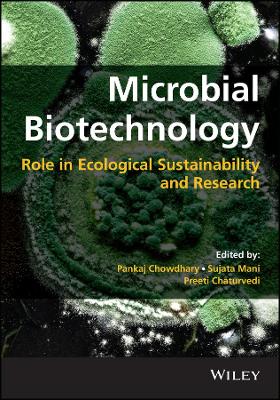True Nature of Disease
 -10%
portes grátis
-10%
portes grátis
True Nature of Disease
Owen, Robin E.
John Wiley & Sons Inc
10/2024
300
Dura
Inglês
9781118738344
15 a 20 dias
666
Descrição não disponível.
1. Introduction
1.1 What is disease and why are there diseases?
1.2 Origin of Life
1.3 The Spontaneous Generation of Life and the Germ Theory of Disease
1.4 A Short History of the Evolution of Life and a LOng History of You
2. Types of diseases and organisms causing diseases of other organisms
2.1 Diseases caused by organisms
2.2 Diseases with other causes
3. Principles of population genetics and evolution
This chapter will cover quantitatively the principles of population genetics
Topics:
a. Genetic variation in populations.
b. Random mating and the Hardy-Weinberg equilibrium.
c. Mutation; spontaneous vs. induced; target theory; effects of mutagens; examples (humans.)
d. The general model of selection (individual); autosomal and X-linked genes.
e. Balanced polymorphisms; human examples - sickle cell anemia, G6PDH deficiency.
f. Mutation-selection balance; examples of human genetic disorders, e.g. haemophilia, etc.
g. Random genetic drift.
h. The neutral theory of molecular evolution.
i. Selective sweeps - principles and evidence.
j. Population structure.
k. Inbreeding & relatedness.
l. Kin selection and social selection; parent-offspring conflict.
m. Epigenetics and gene imprinting - population genetics; maternal-fetal conflict; viability differences between sexes as causes of imprinting
4. Coevolution of host & disease
a. Principles of coevolution.
b.Parasite-host coevolution.
c. Coevolution between bacteria, bacteriophages and plasmids.
d. Wolbachia
e. Evolution of host specificity
f. Evolution of antibiotic resistance by bacteria
5. Evolution of Virulence
a. Basic epidemiology
b. virulence
c. Evolution of virulence theory
d. examples and test of theory
6. Human evolution and disease
This chapter will explore the coevolution of humans and their diseases, including the role of culture
Topics:
a. Primate divergence times and interpretations.
b. Fossil hominids and trends in skeletal evolution.
c. Emergent adaptive suite in basal hominids.
d. Hypotheses for the evolution of nakedness in Homo sapiens
e. Transmission of diseases and parasites from other primates to humans
f. Cultural transmission in humans, e.g. Kuru through cannibalism
g. Human evolution and the three epidemiological transitions
7. Evolution of Human Diseases
This chapter will cover in detail some important diseases of humans
a. Parasitic
b. Bacterial and viral diseases
c. Inherited
d. Prion diseases
e. environmentally induced diseases and cancer
f. psychological disorders
8. Implications for Medicine
This chapter will cover what are now the "traditional" questions of evolutionary medicine -- why we are vulnerable to disease, why we get sick and die. Also covered will be the evolution of senescnece.
9. Conclusions: the future of human evolution and disease
This chapter will summarize the major points of the book. It will also pose the question, what if there were no diseases from now on? How would human evolution be affected?
1.1 What is disease and why are there diseases?
1.2 Origin of Life
1.3 The Spontaneous Generation of Life and the Germ Theory of Disease
1.4 A Short History of the Evolution of Life and a LOng History of You
2. Types of diseases and organisms causing diseases of other organisms
2.1 Diseases caused by organisms
2.2 Diseases with other causes
3. Principles of population genetics and evolution
This chapter will cover quantitatively the principles of population genetics
Topics:
a. Genetic variation in populations.
b. Random mating and the Hardy-Weinberg equilibrium.
c. Mutation; spontaneous vs. induced; target theory; effects of mutagens; examples (humans.)
d. The general model of selection (individual); autosomal and X-linked genes.
e. Balanced polymorphisms; human examples - sickle cell anemia, G6PDH deficiency.
f. Mutation-selection balance; examples of human genetic disorders, e.g. haemophilia, etc.
g. Random genetic drift.
h. The neutral theory of molecular evolution.
i. Selective sweeps - principles and evidence.
j. Population structure.
k. Inbreeding & relatedness.
l. Kin selection and social selection; parent-offspring conflict.
m. Epigenetics and gene imprinting - population genetics; maternal-fetal conflict; viability differences between sexes as causes of imprinting
4. Coevolution of host & disease
a. Principles of coevolution.
b.Parasite-host coevolution.
c. Coevolution between bacteria, bacteriophages and plasmids.
d. Wolbachia
e. Evolution of host specificity
f. Evolution of antibiotic resistance by bacteria
5. Evolution of Virulence
a. Basic epidemiology
b. virulence
c. Evolution of virulence theory
d. examples and test of theory
6. Human evolution and disease
This chapter will explore the coevolution of humans and their diseases, including the role of culture
Topics:
a. Primate divergence times and interpretations.
b. Fossil hominids and trends in skeletal evolution.
c. Emergent adaptive suite in basal hominids.
d. Hypotheses for the evolution of nakedness in Homo sapiens
e. Transmission of diseases and parasites from other primates to humans
f. Cultural transmission in humans, e.g. Kuru through cannibalism
g. Human evolution and the three epidemiological transitions
7. Evolution of Human Diseases
This chapter will cover in detail some important diseases of humans
a. Parasitic
b. Bacterial and viral diseases
c. Inherited
d. Prion diseases
e. environmentally induced diseases and cancer
f. psychological disorders
8. Implications for Medicine
This chapter will cover what are now the "traditional" questions of evolutionary medicine -- why we are vulnerable to disease, why we get sick and die. Also covered will be the evolution of senescnece.
9. Conclusions: the future of human evolution and disease
This chapter will summarize the major points of the book. It will also pose the question, what if there were no diseases from now on? How would human evolution be affected?
Este título pertence ao(s) assunto(s) indicados(s). Para ver outros títulos clique no assunto desejado.
1. Introduction
1.1 What is disease and why are there diseases?
1.2 Origin of Life
1.3 The Spontaneous Generation of Life and the Germ Theory of Disease
1.4 A Short History of the Evolution of Life and a LOng History of You
2. Types of diseases and organisms causing diseases of other organisms
2.1 Diseases caused by organisms
2.2 Diseases with other causes
3. Principles of population genetics and evolution
This chapter will cover quantitatively the principles of population genetics
Topics:
a. Genetic variation in populations.
b. Random mating and the Hardy-Weinberg equilibrium.
c. Mutation; spontaneous vs. induced; target theory; effects of mutagens; examples (humans.)
d. The general model of selection (individual); autosomal and X-linked genes.
e. Balanced polymorphisms; human examples - sickle cell anemia, G6PDH deficiency.
f. Mutation-selection balance; examples of human genetic disorders, e.g. haemophilia, etc.
g. Random genetic drift.
h. The neutral theory of molecular evolution.
i. Selective sweeps - principles and evidence.
j. Population structure.
k. Inbreeding & relatedness.
l. Kin selection and social selection; parent-offspring conflict.
m. Epigenetics and gene imprinting - population genetics; maternal-fetal conflict; viability differences between sexes as causes of imprinting
4. Coevolution of host & disease
a. Principles of coevolution.
b.Parasite-host coevolution.
c. Coevolution between bacteria, bacteriophages and plasmids.
d. Wolbachia
e. Evolution of host specificity
f. Evolution of antibiotic resistance by bacteria
5. Evolution of Virulence
a. Basic epidemiology
b. virulence
c. Evolution of virulence theory
d. examples and test of theory
6. Human evolution and disease
This chapter will explore the coevolution of humans and their diseases, including the role of culture
Topics:
a. Primate divergence times and interpretations.
b. Fossil hominids and trends in skeletal evolution.
c. Emergent adaptive suite in basal hominids.
d. Hypotheses for the evolution of nakedness in Homo sapiens
e. Transmission of diseases and parasites from other primates to humans
f. Cultural transmission in humans, e.g. Kuru through cannibalism
g. Human evolution and the three epidemiological transitions
7. Evolution of Human Diseases
This chapter will cover in detail some important diseases of humans
a. Parasitic
b. Bacterial and viral diseases
c. Inherited
d. Prion diseases
e. environmentally induced diseases and cancer
f. psychological disorders
8. Implications for Medicine
This chapter will cover what are now the "traditional" questions of evolutionary medicine -- why we are vulnerable to disease, why we get sick and die. Also covered will be the evolution of senescnece.
9. Conclusions: the future of human evolution and disease
This chapter will summarize the major points of the book. It will also pose the question, what if there were no diseases from now on? How would human evolution be affected?
1.1 What is disease and why are there diseases?
1.2 Origin of Life
1.3 The Spontaneous Generation of Life and the Germ Theory of Disease
1.4 A Short History of the Evolution of Life and a LOng History of You
2. Types of diseases and organisms causing diseases of other organisms
2.1 Diseases caused by organisms
2.2 Diseases with other causes
3. Principles of population genetics and evolution
This chapter will cover quantitatively the principles of population genetics
Topics:
a. Genetic variation in populations.
b. Random mating and the Hardy-Weinberg equilibrium.
c. Mutation; spontaneous vs. induced; target theory; effects of mutagens; examples (humans.)
d. The general model of selection (individual); autosomal and X-linked genes.
e. Balanced polymorphisms; human examples - sickle cell anemia, G6PDH deficiency.
f. Mutation-selection balance; examples of human genetic disorders, e.g. haemophilia, etc.
g. Random genetic drift.
h. The neutral theory of molecular evolution.
i. Selective sweeps - principles and evidence.
j. Population structure.
k. Inbreeding & relatedness.
l. Kin selection and social selection; parent-offspring conflict.
m. Epigenetics and gene imprinting - population genetics; maternal-fetal conflict; viability differences between sexes as causes of imprinting
4. Coevolution of host & disease
a. Principles of coevolution.
b.Parasite-host coevolution.
c. Coevolution between bacteria, bacteriophages and plasmids.
d. Wolbachia
e. Evolution of host specificity
f. Evolution of antibiotic resistance by bacteria
5. Evolution of Virulence
a. Basic epidemiology
b. virulence
c. Evolution of virulence theory
d. examples and test of theory
6. Human evolution and disease
This chapter will explore the coevolution of humans and their diseases, including the role of culture
Topics:
a. Primate divergence times and interpretations.
b. Fossil hominids and trends in skeletal evolution.
c. Emergent adaptive suite in basal hominids.
d. Hypotheses for the evolution of nakedness in Homo sapiens
e. Transmission of diseases and parasites from other primates to humans
f. Cultural transmission in humans, e.g. Kuru through cannibalism
g. Human evolution and the three epidemiological transitions
7. Evolution of Human Diseases
This chapter will cover in detail some important diseases of humans
a. Parasitic
b. Bacterial and viral diseases
c. Inherited
d. Prion diseases
e. environmentally induced diseases and cancer
f. psychological disorders
8. Implications for Medicine
This chapter will cover what are now the "traditional" questions of evolutionary medicine -- why we are vulnerable to disease, why we get sick and die. Also covered will be the evolution of senescnece.
9. Conclusions: the future of human evolution and disease
This chapter will summarize the major points of the book. It will also pose the question, what if there were no diseases from now on? How would human evolution be affected?
Este título pertence ao(s) assunto(s) indicados(s). Para ver outros títulos clique no assunto desejado.







